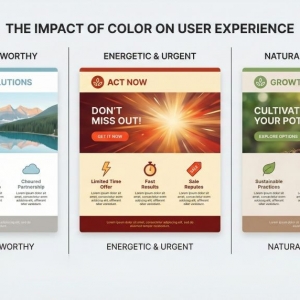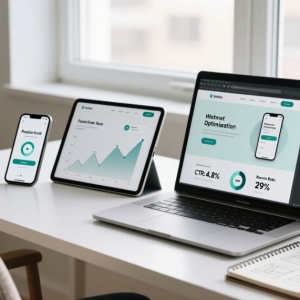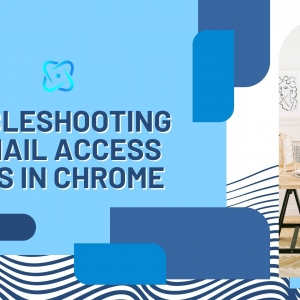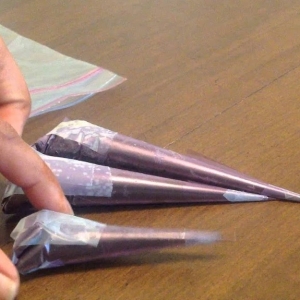Your website has mere seconds to make an impact. Visitors quickly decide whether to stay or leave, and that choice hinges on user experience (UX) design. A site that’s easy to use, fast, and trustworthy can transform casual visitors into loyal customers.
For business owners, marketers, or those working with a website designer, these tips provide practical ways to boost conversions. No design expertise required—just clear, actionable steps to make your site a conversion powerhouse.
Navigation That Feels Effortless
A website that’s hard to navigate is a website that loses users. If visitors can’t find what they need in seconds, they’ll bounce. Clear navigation is the cornerstone of a high-converting site.
Use straightforward labels like “Home,” “Services,” or “Contact.” Avoid burying important pages in nested menus or unusual layouts. Keep the navigation bar consistent across all pages so users always know where to go next. A website designer can create a structure that feels intuitive, guiding visitors toward their goals with ease.
Imagine your site as a well-organized store: clear signage keeps customers engaged, while confusion drives them away.
Prioritize Speed
A slow website kills conversions. If your page takes more than a few seconds to load, users will leave before seeing your offer. Speed isn’t just convenience—it’s a signal of professionalism.
Work with your website designer to optimize load times. Compress images, remove unused plugins, and keep code lightweight. Even a small reduction in load time can significantly improve user retention and conversions. Speed is a critical trust factor.
Communicate Clearly
Your website’s message needs to land instantly. Visitors won’t stick around to decipher vague slogans or creative copy. On the homepage, clarity is your greatest asset.
Be explicit about what you offer. A bakery might say, “Fresh Pastries Baked Daily.” A consultancy could use, “Practical Solutions for Business Growth.” A website designer can help craft messaging that’s direct and engaging, ensuring users understand your value at a glance.
Streamline Forms for Completion
Forms are a common point of abandonment. The more fields or steps involved, the more likely users are to quit. Keep forms short, asking only for essential details like an email or name.
Design forms to feel approachable. Use clear labels, intuitive fields, and buttons with specific actions like “Join Now” or “Get a Quote.” A website designer can ensure forms are user-friendly, reducing drop-offs and encouraging conversions.
Mobile Optimization Is Essential
With most traffic coming from smartphones, a mobile-friendly site is a must. A design that looks great on desktops but clunky on phones will alienate a huge portion of your audience.
Ensure text is readable, buttons are tappable, and forms are easy to use on smaller screens. A website designer should test your site across devices to confirm it’s truly responsive. Mobile-first design is critical for capturing conversions from today’s mobile users.
Use Visual Hierarchy to Guide
Visitors scan websites, not read them. A strong visual hierarchy ensures they focus on what matters most. Bold headlines, vibrant call-to-action buttons, and ample white space create a clear path for the eye.
For instance, a prominent “Buy Now” button in a contrasting color grabs attention, while clutter confuses. A website designer can arrange elements to guide users naturally toward conversion points, making the process feel seamless.
Build Trust with Details
Conversions rely on trust, and trust is built through design. Display contact info clearly, include transparent policies, and use secure payment badges to reassure users. Customer reviews or testimonials add credibility.
Conversely, broken links or outdated content can make your business seem unreliable. A website designer can refine these elements, ensuring your site feels polished and trustworthy at every turn.
Focus Key Pages on One Action
Pages like sign-up forms or checkout screens should have a single purpose. Extra links, pop-ups, or banners can distract users and lower conversions.
Collaborate with a website designer to streamline these pages. A checkout page, for example, should only include payment fields and a clear “Complete Purchase” button. A focused design keeps users on track and boosts completion rates.
Test to Find What Works
Even the best website designer can’t predict user behavior with certainty. A/B testing is the only way to know what drives results. Experiment with one variable at a time—a headline, button color, or layout—and measure the impact.
Testing uncovers what resonates with your audience. Over time, these tweaks can lead to significant conversion gains, making your site more effective with every iteration.
Deliver a Seamless Experience
Great UX design is invisible. Users shouldn’t notice the effort it takes to navigate or complete an action—it should just flow. Every interaction should feel intuitive and natural.
A website designer can map out user journeys to eliminate friction, ensuring visitors reach their goals without hassle. A smooth experience drives conversions and encourages repeat visits.
Final Thoughts
UX design isn’t about flashy aesthetics—it’s about making your website work for your users. By focusing on speed, clarity, and trust, you create a site that naturally converts.
Partner with a Singapore website designer who prioritizes function over form. With these strategies, your site will turn visitors into customers, delivering results that go beyond chance.











